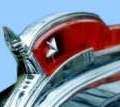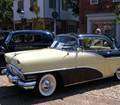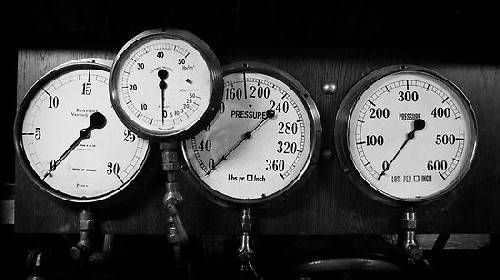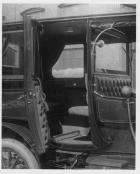|
Re: What SINGLE factor MOST contributed to the demise of Packard?
|
||||
|---|---|---|---|---|
|
Home away from home

|
I think Packard management gets too much blame. The worst thing they did was lousy advertising.
But let's look at my nominee for the worst managed company in history - Western Union Back in the 1800's U was huge. And as the high tech company of the ages they got a lot offers for new ventures. They turned down the telephone, the modern typewriter, and the digital computer. So what was once the most widely recognized trade mark in the world went bust. More remarkable than Packard was GM's scrapping of Oldsmobile. They thought they shouldn't be building cars for old people with money to spend. So Toyota took over that market with the Camry. Now that's bad management.
Posted on: 2013/4/26 21:51
|
|||
|
||||
|
Re: What SINGLE factor MOST contributed to the demise of Packard?
|
||||
|---|---|---|---|---|
|
Home away from home

|
Without looking into the account books I'm with Howard (HH56) on that. The shortness of public orders but ongoing investments (new factory buildings, equipment investments, development expenses for jet engines that resulted in the highest thrust jet built up to that time, even fundamental research) took a toll on the independent company. The 1952 make-to-order production of 3.025 jet engines after eight years of drought was a last glimmer.
"S-P needed about $100 million a year in defense business to break even..." according to this source. PMCC played in the champions league and ran out of steam before gathering the harvest. [picture source: www.redbubble.com]
Posted on: 2013/4/27 0:07
|
|||
|
The story of ZIS-110, ZIS-115, ZIL-111 & Chaika GAZ-13 on www.guscha.de
|
||||
|
||||
|
Re: What SINGLE factor MOST contributed to the demise of Packard?
|
||||
|---|---|---|---|---|
|
Home away from home
|
Interesting question.
There were many factors that accumulated over time and came together to kill Packard. This at a time when there was a possibility of Packard surviving for a couple of more years, at least. Had it made it through 1958 who knows what would have happened; although, some here have made some interesting speculations. To me, the single factor that most contributed to the demise of Packard was the acquisition of Studebaker. Sort of like being out of work with many bills and just barely getting by then inviting your irresponsible and unemployed brother-in-law to come live with you. Not enough to go around, and both starve. (o{}o)
Posted on: 2013/4/29 13:38
|
|||
|
We move toward
And make happen What occupies our mind... (W. Scherer) |
||||
|
||||
|
Re: What SINGLE factor MOST contributed to the demise of Packard?
|
||||
|---|---|---|---|---|
|
Home away from home

|
Granted the Studebaker merger by itself was a disaster. But given Lincoln was losing money on every car sold didn't leave a lot of encouragement for the Packard line as a stand alone brand.
What caught my eye was a $90 million addition to unfunded pension liabilities at Studebaker for 1954. Well that's huge and enough reason to stay away from any merger. That's a bride with AIDS and syphilis. The bad management was at Studebaker, but at least they were diversified enough to survive by getting out of the car business.
Posted on: 2013/4/29 16:13
|
|||
|
||||
|
Re: What SINGLE factor MOST contributed to the demise of Packard?
|
||||
|---|---|---|---|---|
|
Home away from home
|
Bad management at Packard too - not to have discovered what the Studebaker financial situation was before merging. I think the time to have merged successfully was earlier with Hudson and Nash. Packard-Clipper-Hudson-Nash , two basic platforms, 2 or 3 basic engines (big V8, small V8, 6)
Posted on: 2013/4/29 16:36
|
|||
|
||||
|
Re: What SINGLE factor MOST contributed to the demise of Packard?
|
||||
|---|---|---|---|---|
|
Home away from home

|
Several years ago I read an article that said that it cost almost $1 billion to take a car from concept to actual production. Of course it didn't cost that much in the 1920s and 1930s, but it was still very expensive. It is easy with 50-year hindsight to point out the shortcomings and mistakes made by a long-defunct auto manufacturer and I do not think anyone has all of the information that went into the decisions that ultimately doomed Packard.
I have heard it said that the end was signalled when Packard began to produce its 120 and later 110 models. The "niche" concept only works when the demand/production/profit combination works to company's advantage; but by the mid 1930s, the horizon was crowded with the remains of high-end products such as Marmon, Duesenburg, Pierce-Arrow, Stutz, etc. Packard made what was a sound decision to produce cars to compete with Buicks and Hudsons, and as a result the company entered the early 1940s in financially sound shape. Had the U.S. not entered World War II and shut down auto manufacturing, Packard could have continued development of its popular Clipper line and might have avoided the 1948 debacle. Something of even greater importance has not been mentioned and that was the concept of a merger of the major independents into American Motors, which would have pooled the assets of all of those independents into a entity designed to actually compete against Ford and Chrysler. You notice I leave out General Motors because by the 1950s, there was no car manufacturing corporation that could have competed against GM. Ford and Chrysler were another story and an Americn Motors consisting of Nash, Studebaker, Hudson and Packard might have proved viable. Whether this corporaion would still be around today is debatable, seeing how Chrysler in the past 20 years has been owned by Mercedes Benz and Fiat. Sure there was bad management at Packard, just as there was (and is) at all car companies. Marketing is not an exact science. I think the management at Packard desperately tried to save the company as best that it could and I do not see any real villains in the demise of Packard.
Posted on: 2013/4/30 7:36
|
|||
|
You can make a lot of really neat things from the parts left over after you rebuild your engine ...
|
||||
|
||||
|
Re: What SINGLE factor MOST contributed to the demise of Packard?
|
||||
|---|---|---|---|---|
|
Forum Ambassador
|
I've said it before, saying it again: Missing out on "the big dance" of corporate mergers of the 1920s was the beginning of the end. As Ross pointed out, when the all-steel body became the norm that one event decided who would live and who would die. The astronomical cost of retooling a body shell was doable if you had multiple lines to amortize the costs to.
Ad to that the 1950s Gestalt of "Might makes right" and all the independents were viewed as lame ducks, consumers were wary of being stuck with something they couldn't have serviced.
Posted on: 2013/4/30 8:49
|
|||
|
||||
|
Re: What SINGLE factor MOST contributed to the demise of Packard?
|
||||
|---|---|---|---|---|
|
Home away from home

|
The plan from the get go was for Studebaker-Packard to merge with the Nash-Hudson combine. Packard kept their end of the deal but Nash-Hudson backed out of the deal.
Nash needed Hudson like a hole in the head. Packard would have been better off with Nash, but Nash was better off by itself given it got Willys from Kaiser. Packard would have been gone by 58 even without the Studebaker thing. In reality though, Packard was only king during the Twin Six. Granted the 384ci Custom Eight was a better performer than the Twin, but once Cadillac overbuilt the luxury market with the V-16 Packard was in the shadows. Much as I like the 6th and 7th series Packards, they aren't in the same league as the V-16.
Posted on: 2013/4/30 8:50
|
|||
|
||||
|
Re: What SINGLE factor MOST contributed to the demise of Packard?
|
||||
|---|---|---|---|---|
|
Forum Ambassador

|
While lots of interesting points have been raised, I believe the SINGLE most significant factor dates back far earlier and was the rise of the popular-priced car affordable to the masses and the shrinkage, in part a consequence of that, of the luxury market. Most if not all of Packard's subsequent decisions stemmed from this situation. A significant turnover point in the perception of Packard by those in the luxury car market came when the senior cars were no longer stand-alone cars but sharing bodies with the juniors.
Posted on: 2013/4/30 10:32
|
|||
|
||||

 (24.53 KB)
(24.53 KB)







